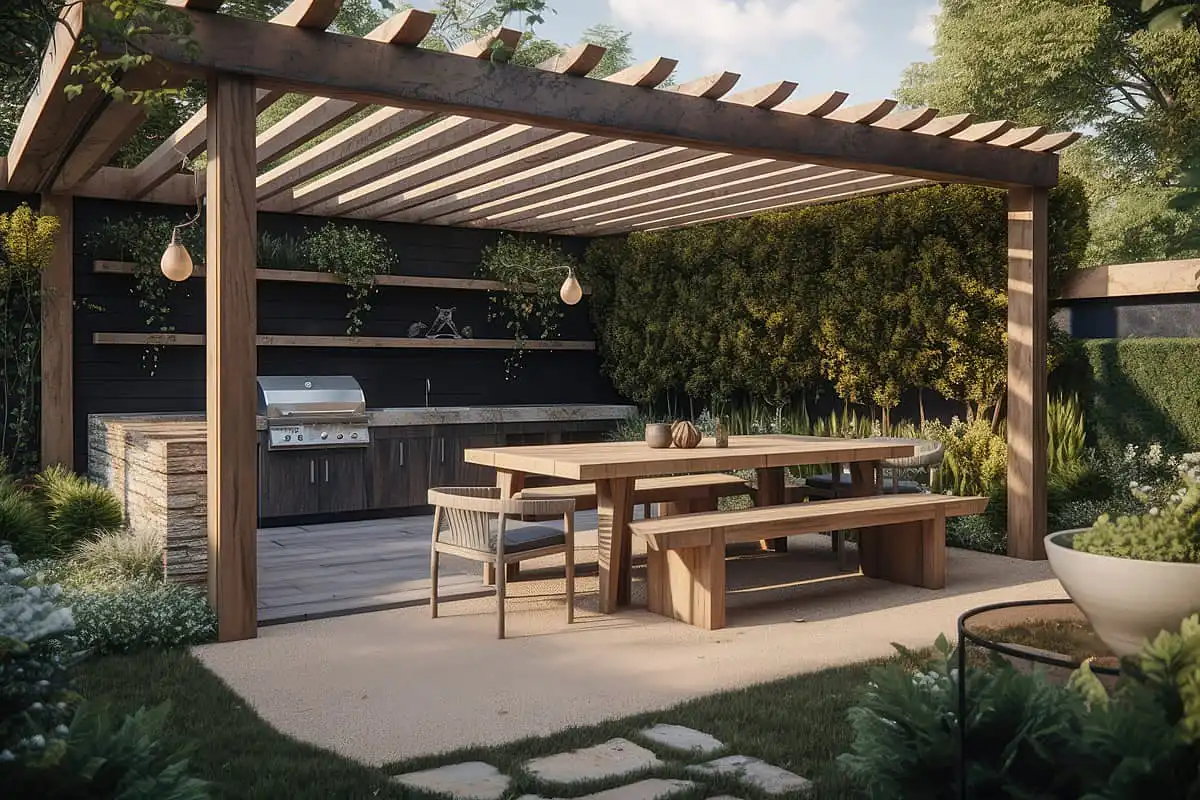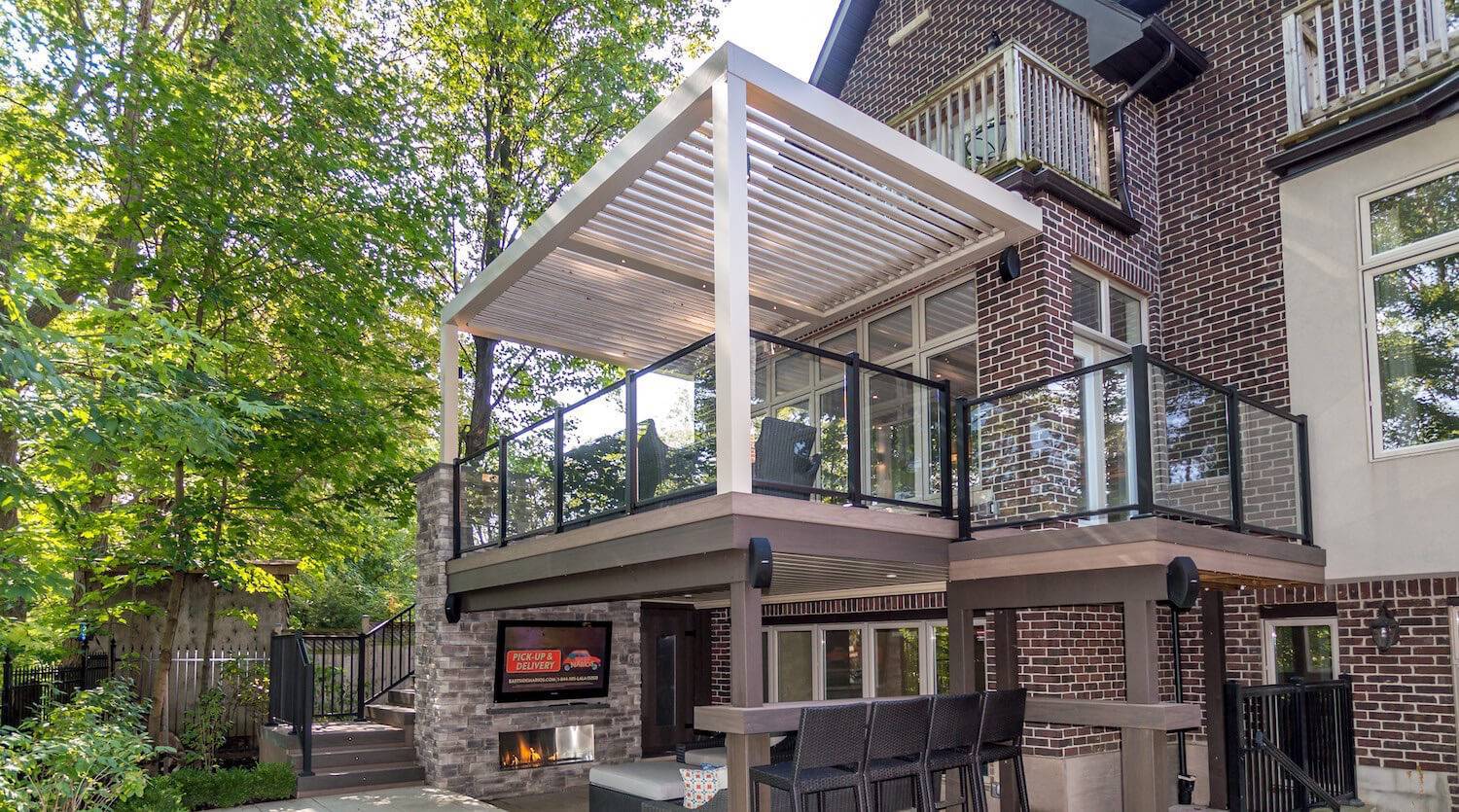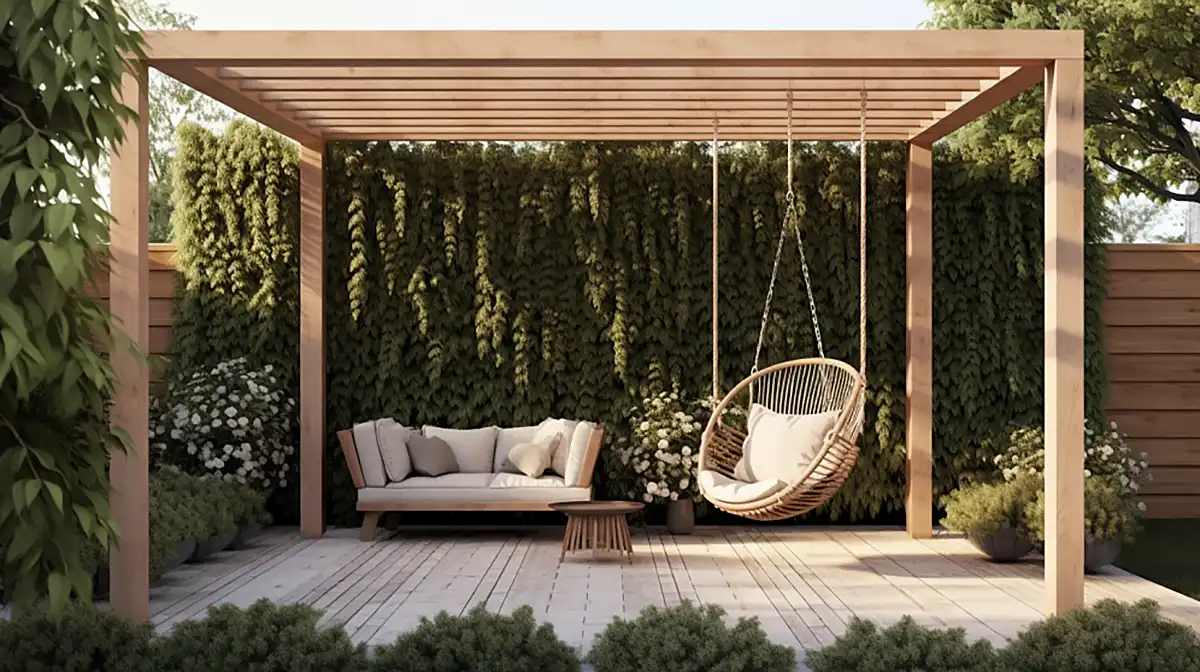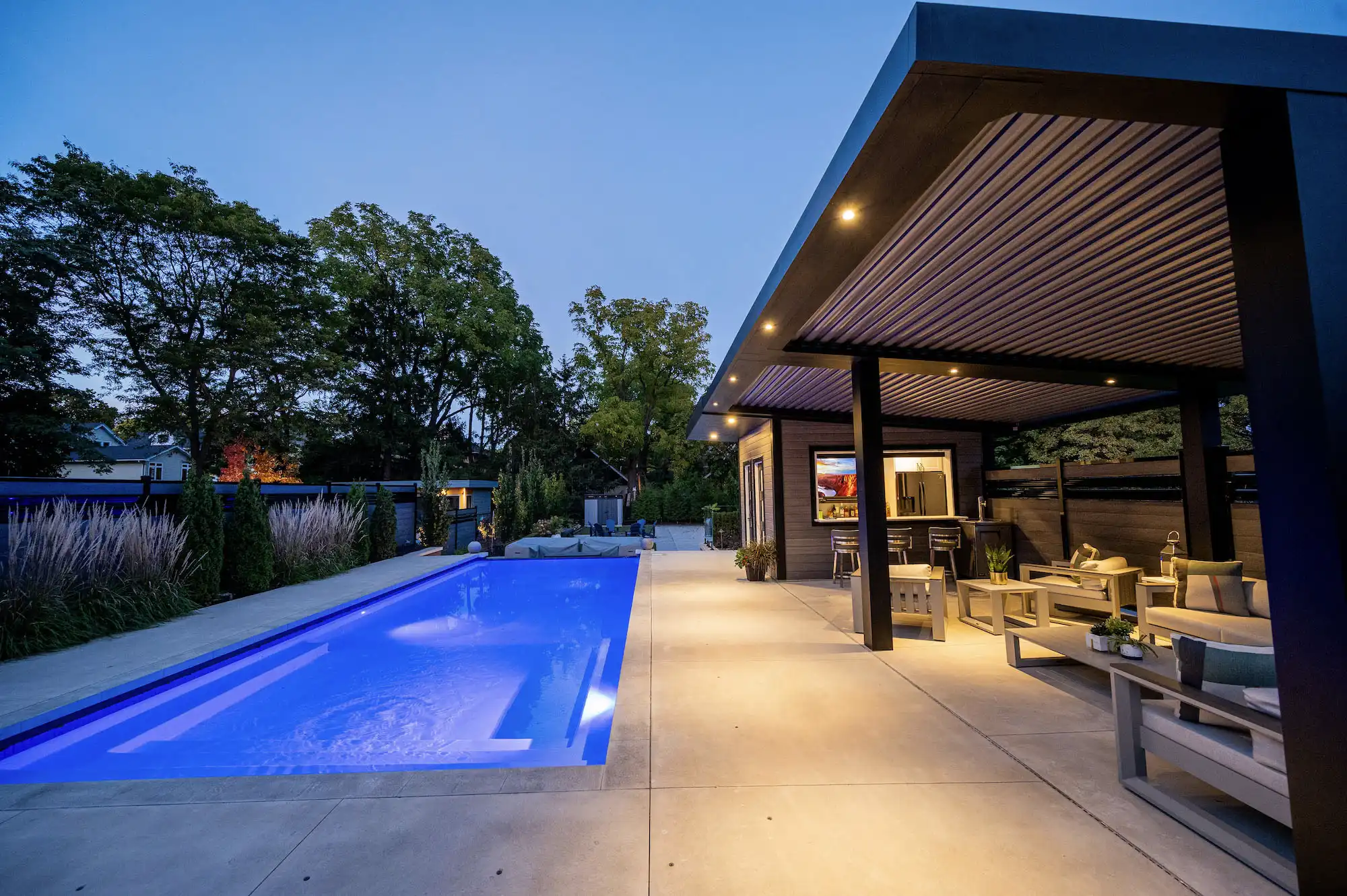Bring Shade and Shelter to Your Backyard With Pergola in 2023
Discover a variety of pergolas at The Deck Store and enhance your backyard with pergola.
Pergolas are becoming an increasingly popular way to add shade, shelter, and style to exterior areas and recreational spots. With the ability to customize size, shape, materials, and more, pavilions allow you to create your ideal outdoor oasis. This article will explore everything you need to know about pergolas in 2023, from types and materials to costs, designs, and tips for choosing the perfect pergola for your backyard.
Why Add a Pergola to Your Backyard?
A pergola is an architectural feature that can transform a regular garden into a gorgeous outdoor oasis. Pergolas provide many benefits that make them a worthwhile investment for homeowners looking to upgrade their outdoor area. Here are some of the top reasons to consider adding structure to your landscape:
- Add shade: one of the primary functions of a structure is to provide shade and protection from the harsh sun. The overhead canopy blocks UV rays and keeps patios and pool areas more comfortably cool.
- Enhance ambiance: structure adds visual interest and character to your green space. The striking lines and pattern of a pergola can completely change the look and feel of your outdoor space.
- Increase usability: By providing shade and protection from the elements, pergolas expand the hours and seasons your yard can enjoy. Spend more time outdoors without overheating or getting rained on.
- Entertain and relax: an arbor becomes a focal point for gatherings with friends and family. Enjoy meals al fresco, have a reading nook, or set up patio furniture under its shelter.
- Add value: outdoor living features like structures are highly desired in real estate. A structure can potentially boost your home’s value and help it sell faster.
Pergola vs. Gazebo: What’s the Difference?
Though the terms pergola and gazebo are sometimes used interchangeably, they are distinct outdoor structures. The main differences are:
- Purpose: primarily provide shade and overhead coverage. Gazebos are standalone structures mainly used for shelter.
- Sides: It typically has open or partially open sides. Gazebos have enclosed sides.
- Roof: have slatted, open covering. Gazebos have solid, covered tops.
- Size: it ranges from small to quite large. Gazebos tend to have a smaller footprint.
- Design: usually has a repetitive post and beam design. Gazebos can take many shapes and styles.
In essence, pergolas primarily provide shade, whereas gazebos offer protection. If you want outdoor space partly protected from sun and rain, a pergola is likely the better choice.
What Are the Different Types of Structures?
There are several common types of structures to choose from, each with their own distinctive look and features.
Attached
As the name suggests, attached structures are permanently connected to a home, garage, or other existing structure. They may abut the main building or extend partially out of it. Attached structures offer the following benefits:
- Seamless flow from indoors to outdoors.
- It takes up less yard space.
- Requires less foundation work.
However, attached pergolas do have some downsides to weigh. The size and location are fixed based on the existing structure. They also typically need to match the architectural style of the home.
Free Standing
Detached structures are entirely separate structures built over a patio, deck, garden, or other part of the yard. They do not connect to or attach to any other building. Free-standing pergolas offer more flexibility in terms of:
- Placement: It can be located anywhere in the yard.
- Size: Dimensions can be customized.
- Design: More freedom with shape and materials.
- Portability: Some freestanding options can be moved
The main drawback is that they take up more yard space. Detached structures also require proper foundation work.
Hybrid
As the name suggests, this style combines features of both attached and freestanding versions. One side attaches to a home or deck, while the other sides remain unconnected. This allows a hybrid structure to feel like a natural extension of the dwelling area while still retaining some freedom.
What Size Is Right for Your Backyard?
Structures come in a very wide range of sizes to suit small urban courtyards up to expansive luxury gardens. The most popular sizes are:
- Small: 8 x 8 feet up to 10 x 10 feet. ideal for covering bistro sets or creating intimate nooks.
- Medium: 10 x 12 feet up to 14 x 16 feet. Perfect size for shading a good portion of a patio or seating area.
- Large: 14 x 20 feet up to 20 x 20 feet. Covers larger gathering areas very comfortably. Must have adequate yard space.
- Extra-large: 20 x 20 feet and beyond. Makes a dramatic statement in big gardens. Requires an extensive foundation and support.
When choosing your structure size, the main factors to consider are:
- Yard dimensions: Don’t overwhelm a petite space.
- Intended use: Size appropriately for your needs.
- Canopy design: Harmonize shading with spaciousness.
- Proportion: Allow ample clearance around and under.
- Budget: Larger means greater cost.
A properly sized structure enhances your space rather than dominating it.
What Is the Best Material for Construction?
Pergolas can be built from a variety of materials, each with their own aesthetic appeal, durability, and cost considerations. Here are some of the most common and best-suited materials:
Wood
- Cedar wood has a beautiful natural woodgrain. Withstands weather well. Needs periodic treatment and sealing.
- Redwood is decently priced. age gracefully to silvery gray. Naturally insect-resistant.
- Teak is the most expensive wood option. Stunning appearance. Highly durable and stable. Requires minimal upkeep.
Synthetic Wood
- Trex is made from recycled materials. Won’t rot, split, or crack. No staining is needed. Withstands insects.
- TimberTech has a realistic wood look. Resists moisture, fading, and pests. Minimal maintenance. Excellent durability.
Metal
- Aluminum: lightweight yet very sturdy. Excellent corrosion resistance. Holds up well to weather.
- Steel is very strong and durable. Withstands high winds. Prone to rusting, which requires prevention.
Vinyl
- PVC is a budget-friendly option. Won’t rot, peel, or flake. Resists insects. Needs minimal care. lacks a natural wood look.
When selecting the ideal material, consider your climate, design style, skill level, and budget. Maintainability is also key for long-lasting enjoyment of your structure.
Roofing Options: Open, Solid, Retractable, and More
The covering is arguably the most important part of any structure. You’ll want to decide whether to have an open-slatted design or a fully covered style. Here are some common pergola cover styles:
Open
Open covers allow sunlight to filter through while still providing shade and coverage. They consist of:
- Spaced beams are simple and affordable. Let in dappled sunlight. Less protection from rain.
- Latticework: crisscrossed slats with small spaces between. Adds visual interest. Partially blocks UV rays.
- Louvers: adjustable slats to control sunlight and airflow. More versatility. Can completely close the cover.
Solid
For maximum shade and weather protection, a solid covering is the way to go. Options include:
- Plastic or fiberglass panels let in some light. Durability depends on quality. Can yellow over time.
- Wood or composite boards have a natural look. Blocks light and rain. Needs occasional sealing and maintenance.
- Aluminum panels are very water-resistant. Lightweight for easy installation. Industrial aesthetic. Expands and contracts with temperature changes.
- Corrugated coverings channel away rainwater. Translucent material maintains brightness. Can be noisy during rainstorms.
Retractable
Retractable pergola covers allow you to open and close the covering whenever you want. Benefits include:
- Total control over sun exposure and weather protection
- The roof can open partially or fully.
- Motorized systems for easy operation
- Increased cost for mechanical components
Costs: What Factors Impact the Budget?
The cost of a pergola structure depends on several factors, most notably:
- Size: Larger structures require more materials and labor. A ~200 sq. ft. structure can range from $5,000 to $9,000 Larger ones easily reach $15,000+.
- Design complexity: basic square structures are the most affordable. Elaborate shapes, angles, and detailing add expense.
- Materials: Natural woods drive up costs. Synthetics and metals are usually cheaper.
- Features: Add-ons like lighting, curtains, and outlets also increase the overall budget.
- Covering style: Uncovered designs are less complex and more economical than those with protection, which require special materials. Retractable models increase costs significantly.
- Labor: Pro installs command $40–$80 per hour. DIY is cheaper but has a learning curve.
When getting quotes, make sure they include all necessary foundation work, fasteners, fittings, and finishes. An experienced contractor can suggest ways to save on your patio pergola.
5 Key Design Tips for the Perfect Structure
Follow these top design tips when planning and constructing your custom pergola:
- Choose proportional dimensions. Avoid an undersized or oversized structure for your space.
- Allow for at least 8 feet of clearance height under the structure. Taller is better.
- Pick visually lightweight materials to avoid a bulky, heavy look.
- Incorporate built-in seating, planter boxes, or storage for functionality.
- Get proper permits and ensure they meet zoning setback requirements.
Pergola Ideas: Inspiring Photos
Looking for some inspiration? Here are a few gorgeous examples highlighting different looks you can achieve:
Rustic Wood Pergola

A natural wooden pergola exudes cozy, timeless appeal. Stone accents complement the wood beautifully.
Modern Metal Pergola

Metallic structures have an ultra-contemporary vibe, perfect for modern spaces. The crisp lines stand out.
Backyard Pergola Swing

Take your pergola enjoyment up a notch by incorporating a swing! Sway gently as you survey your garden.
Poolside Pergola

Maximize poolside shade and elegance by extending your pergola over the water. A scenic spot for meals al fresco!
Prepared for Open-air Relaxation? Install a Pergola!
Structures are a worthwhile investment to enhance your outdoor living space. With numerous options for size, placement, features, and design, you’re sure to find the ideal pergola to suit your home and lifestyle needs. This architectural feature adds elegance and offers protection from the sun, ensuring lasting comfort for exterior areas for many years ahead.
The key is to determine your needs, do thorough planning, choose high-quality materials, and properly maintain your pergola. With a stunning, functional pergola, your landscape becomes a relaxing oasis ready to be enjoyed in any season!
FAQ
What is a pergola?
A pergola is an outdoor structure that consists of vertical posts and an open lattice covering. It is designed to provide partial shade and serve as a decorative element in your exterior setting.
How can a pergola bring shade and protection to my garden?
This structure is designed to provide shade by partially blocking the sun’s rays with the open lattice covering. They also offer a covered area where you can relax, entertain, or dine outdoors, protecting you from light rain or providing relief from direct sunlight.
What materials are structures made of?
It can be made of various materials, such as aluminum, steel, or wood. Aluminum structures are lightweight and durable, whereas steel builds offer robustness and resilience to weather conditions. Wooden structures, especially those made of cedar, have a natural and timeless appeal.
What are the advantages of an aluminum-frame pergola?
An aluminum-frame pergola is lightweight, corrosion-resistant, and requires minimal maintenance. It is also less likely to attract pests, such as termites. Additionally, aluminum can be easily shaped and customized to fit your property’s configuration and aesthetic.
Can I adjust the canopy of a pergola?
Yes, many constructions have retractable canopies or drapes that can be easily adjusted based on your preference for shade or sunlight.
Can I decorate my pergola with outdoor furniture?
Absolutely! It can be beautifully complemented with exterior furniture such as outdoor dining sets, lounge chairs, or even a cozy porch swing. This allows you to create a comfortable and inviting space under the pergola.
Can I install a pergola near my poolside?
Yes, a pergola can be a fantastic addition to your poolside area, providing shade and a stylish space to relax after a swim.
Is it possible to have a freestanding pergola?
Yes, freestanding pavilion do not require any additional support structures and can be placed anywhere in your outdoor area. They are versatile and can be used to create a designated seating area or to frame a specific landscape feature.
Can a pergola withstand various weather conditions?
Structures are designed to be weather-resistant and able to withstand various weather conditions. However, it is recommended to choose a pergola made of sturdy materials and follow proper maintenance practices to ensure its longevity.
How can I make the space under my pergola more private?
You can add privacy to your pergola by installing shade sails, curtains, or climbing plants and vines on the pergola’s frame. These options will create a sense of intimacy and seclusion in your outdoor space.
Looking to get started on deck design & build packages, but not sure where to begin? Contact us.
Visit our website to find a location closest to you, or to contact a deck designer today!
Follow us on Facebook and Instagram for more deck design ideas.
